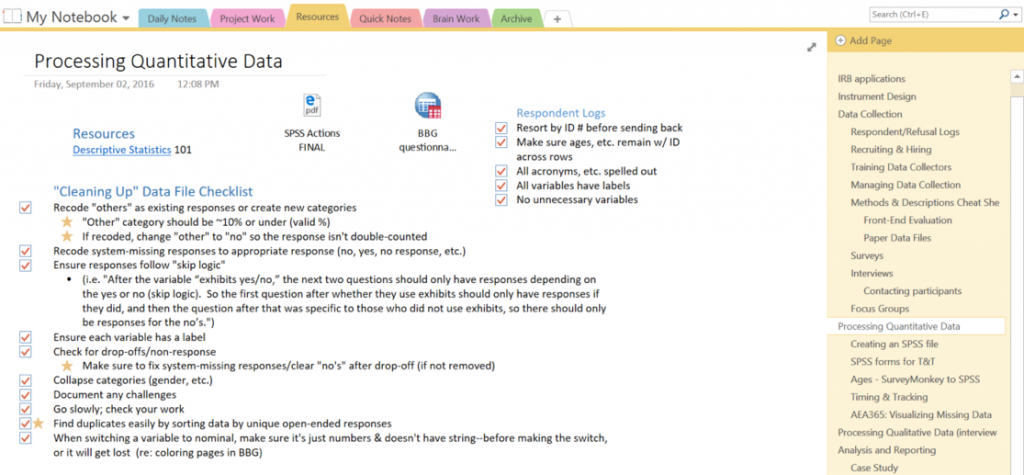My name is Samantha Theriault, and I am the Research Assistant at Randi Korn & Associates (RK&A), a research, evaluation and intentional planning company that specializes in museums and informal learning.
Lesson Learned: As a research assistant, I spend much of my time entering and processing data. Data entry and clean-up is time consuming and challenging, and it makes me feel like a worm turning dirt among the roots of our work. From this point of view, I’m watching projects grow from the ground-up, so it’s even more exciting to see the final product. Preparing quantitative and qualitative data for analysis isn’t glamourous, but it is invigorating and contributes to the success of all our work. Evaluation runs on data – so keeping it organized from the beginning is vital.
Hot Tip: Set aside chunks of time to spend with data. Depending on the size of your project and methods, data entry can take a few hours or several days, or even weeks! Prioritizing data entry – rather than “squeezing it in” between tasks – which increases my comfort with the data set and puts me in a rewarding flow state. With mindfulness during data entry, I notice patterns as they emerge. For example, I recently struggled to interpret a participant’s shorthand on a question about which neighborhood they live in, but noticed others spelled out all the words in their responses. I matched the shorthand to the full neighborhood name (and double-checked with Google!), which I would have missed were I entering data mindlessly or too quickly. Similarly, I might notice other trends, such as reduced responses to a certain question, which I flag for examination later.
Cool Trick: Create a “living” data entry processing handbook. When I was first learning to process data using SPSS, I created a “cleaning up data files checklist” and add unique tasks and tips to it each time I work on a new data set. My checklist includes recoding system-missing responses, ensuring that survey responses follow skip logic, and reminders such as “slow down and double-check your work!” Since my colleagues depend on these data sets to do their work, I include their needs in my checklist, too: spell out acronyms, label variables, and delete “working” variable labels I created while collapsing categories into single columns. I also create a log for each digital survey’s lifecycle, documenting any changes to the museum’s exhibition or program during data collection, and quirks to remember when it’s time to process the data for analysis. This detailed approach to record-keeping is especially useful when my colleagues have specific questions about the data during analysis.
Rad Resource: Microsoft OneNote is a password-protected digital notebook that I use to keep track of my data cleaning process (and many other elements of managing data collection and processing). I like that I can repurpose checklists and save relevant files on the same page – it’s like a 4D Moleskine to me!

The American Evaluation Association is celebrating Labor Day Week in Evaluation: Honoring the WORK of evaluation. The contributions this week are tributes to the behind the scenes and often underappreciated work evaluators do. Do you have questions, concerns, kudos, or content to extend this aea365 contribution? Please add them in the comments section for this post on the aea365 webpage so that we may enrich our community of practice. Would you like to submit an aea365 Tip? Please send a note of interest to aea365@eval.org . aea365 is sponsored by the American Evaluation Association and provides a Tip-a-Day by and for evaluators.
